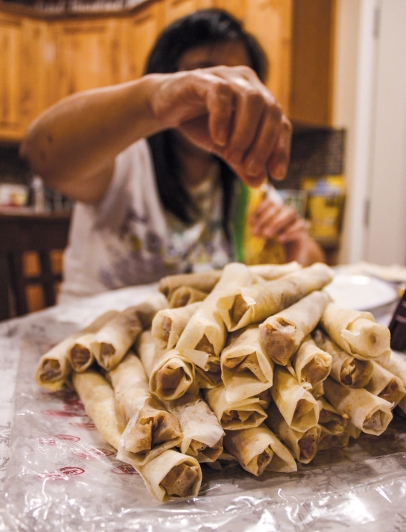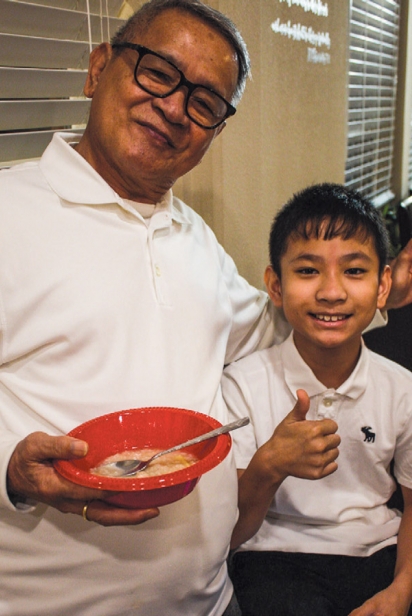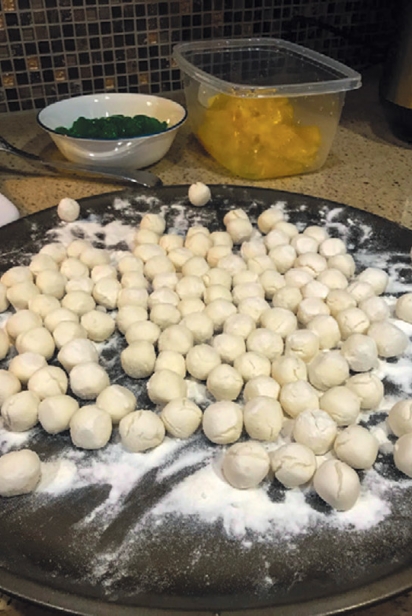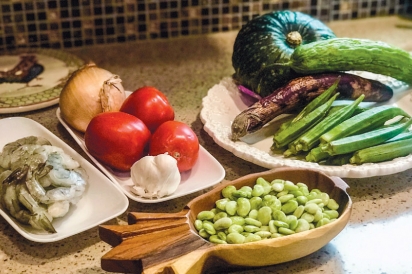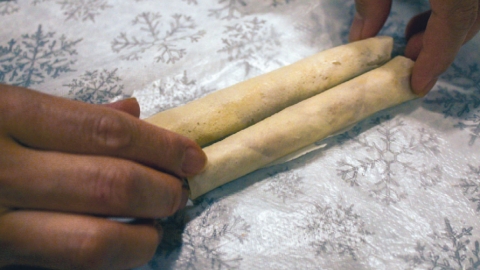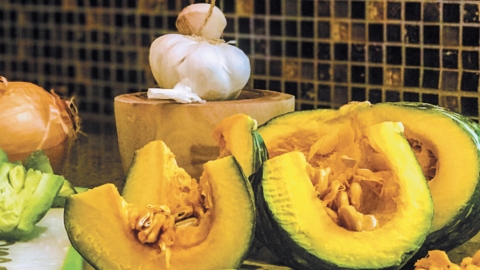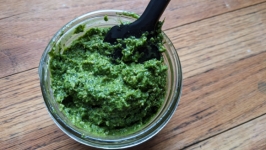Filipino Foods of Alaska
When I left Juneau for college, I missed the foods I grew up with, like lumpia, pinakbet, arroz caldo, and bilo bilo. A few years ago, I started learning how to make these Filipino meals. Every Filipino recipe I learn reminds me of a memory, teaching me what it means to be Filipina.
Lumpia, a well-known Filipino snack, are deep-fried spring rolls. Carrots, cabbage, and fried pork are minced and mixed with spices, creating the innards for a flaky lumpia wrapper. Filipinos in Alaska sometimes replace pork with salmon. Once the roll is wound tight, the lumpia are frozen and then fried until golden and crisp. Despite being known in the U.S. as a Filipino dish, lumpia derives from a Chinese spring roll brought to the Philippines by Fujian province migrants. However, lumpia is definitely Filipino—my favorite way to eat it is not with a savory filling, but with a slice of sugared banana or plantain. This popular adaptation of lumpia is called turon, and it’s one of my favorite snacks when I’m craving something sweet.
Lumpia is found at big Filipino gatherings, and making lumpia requires a big crowd too. Every year, the Filipino Community, Inc. in Juneau makes hundreds of lumpia to sell on July 4th. In preparation, volunteers gather in the Filipino Community Hall to wrap each roll in time for Independence Day. The work becomes a party in itself, with mothers chatting about the latest drama on The Filipino Channel while their kids play. As a kid, I explored the hall with my cousins while our parents helped with the cooking and rolling. On July 4th, our parents sold fresh lumpia to locals lined up at our tent.
Pinakbet is a vegetable dish made during harvest season in the Ilocos region, a sliver of western coastal land in the north where my family comes from. The Ilocano word “pinakebett” means “shrunk” or “shriveled,” and that’s how the vegetables look once they are bathed in fish paste and sauces. Vegetables indigenous to the Philippines are thrown in a pot to make the dish. In the U.S., foods like bitter melon, okra, string beans, eggplant, and lima beans make the cut. The soup is sweet, the vegetables are crunchy and fresh, and the dish is light yet filling to eat. Our family eats the meal with rice, which soaks up the savory juices and fills our stomachs whenever we’re hungry.
In the summer, my mom made pinakbet to serve with fried milkfish from the local Filipino store, freshly caught salmon a friend would give us, or chicken adobo, another popular Filipino meal. The meal is a staple in my life; our family ate it almost weekly, as both a side and a main dish. When my mom felt I wasn’t eating enough vegetables, she’d fill a pot with all the vegetables she could find and fill our plates with pinakbet. When I asked how to make it, my mom described how her parents would rummage for fresh vegetables to add to the stew. While our family didn’t have a large farm in the Philippines, there were wide varieties of vegetables and nuts growing around the house. Sometimes, the dish would be served with wild chicken or duck found around town. Pinakbet is a dish made purely from the land, and it’s deliciously refreshing because of it.
When making these foods for a group of friends recently, I remembered how each meal has a story that is connected to the Philippines, to Filipino people, and to my family, just as it’s connected to me. Even when I’m far away from home, each recipe I learn reminds me how important food is to Filipino culture. Every recipe is a memory, and when I share a meal with you, we get to make a new memory together.


